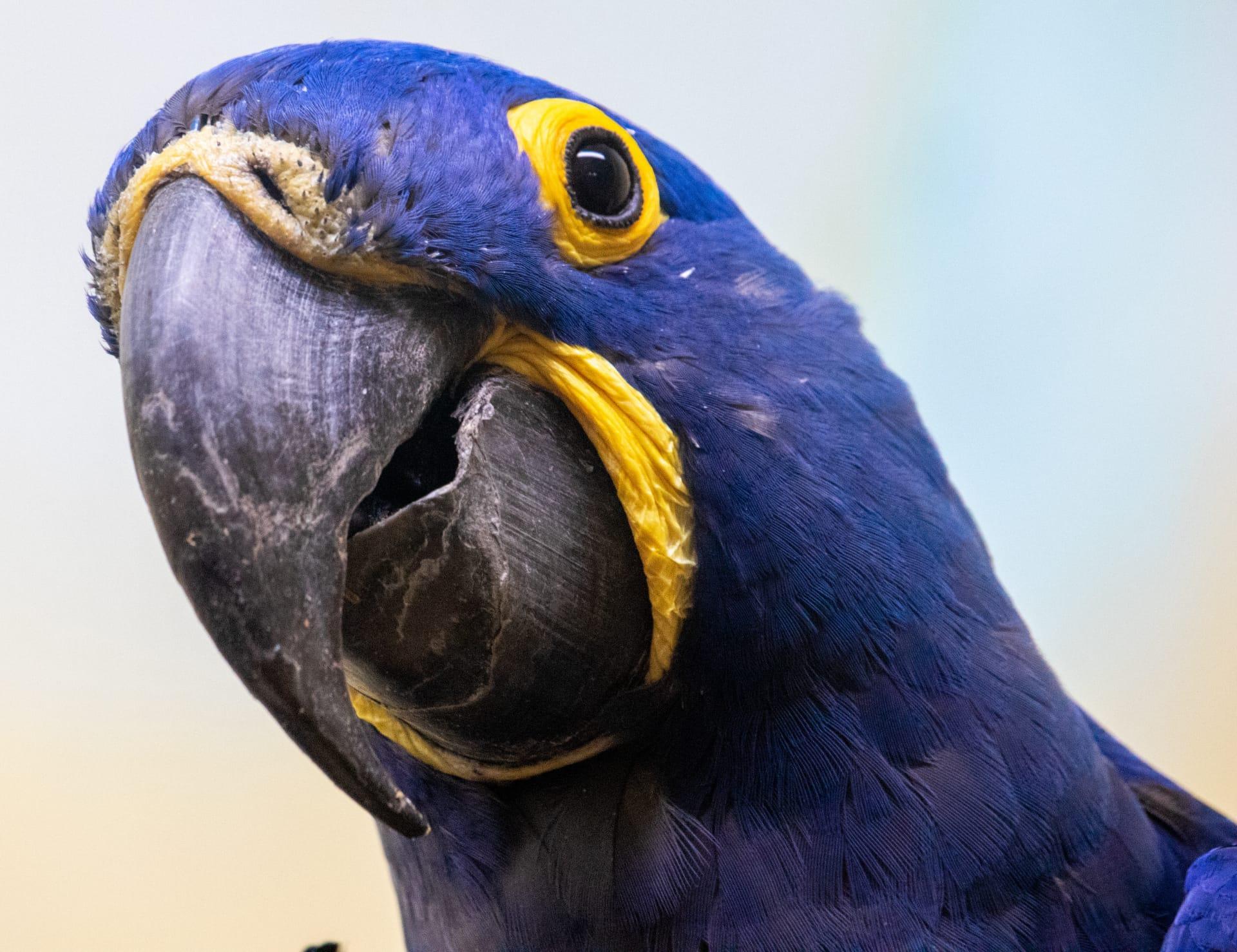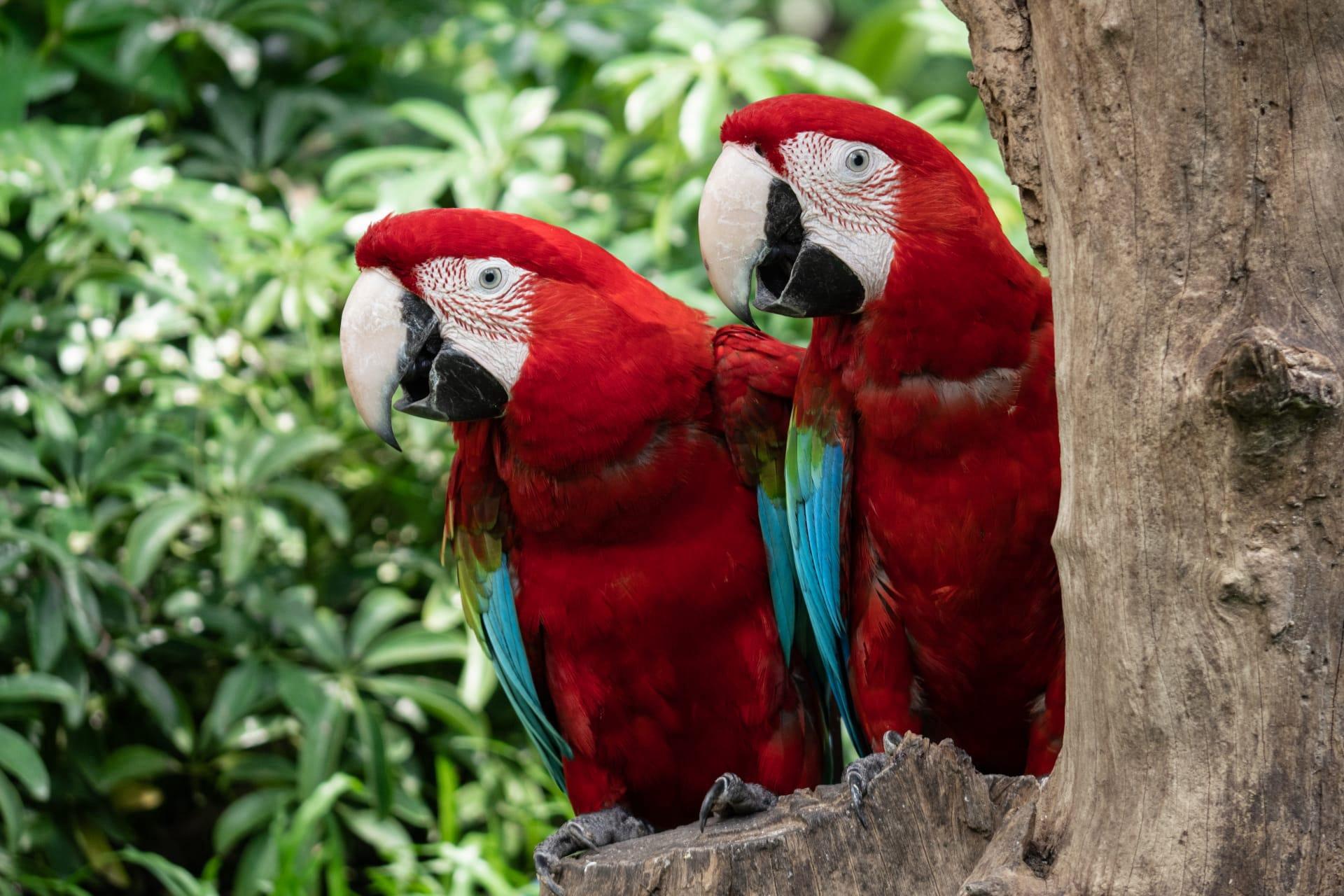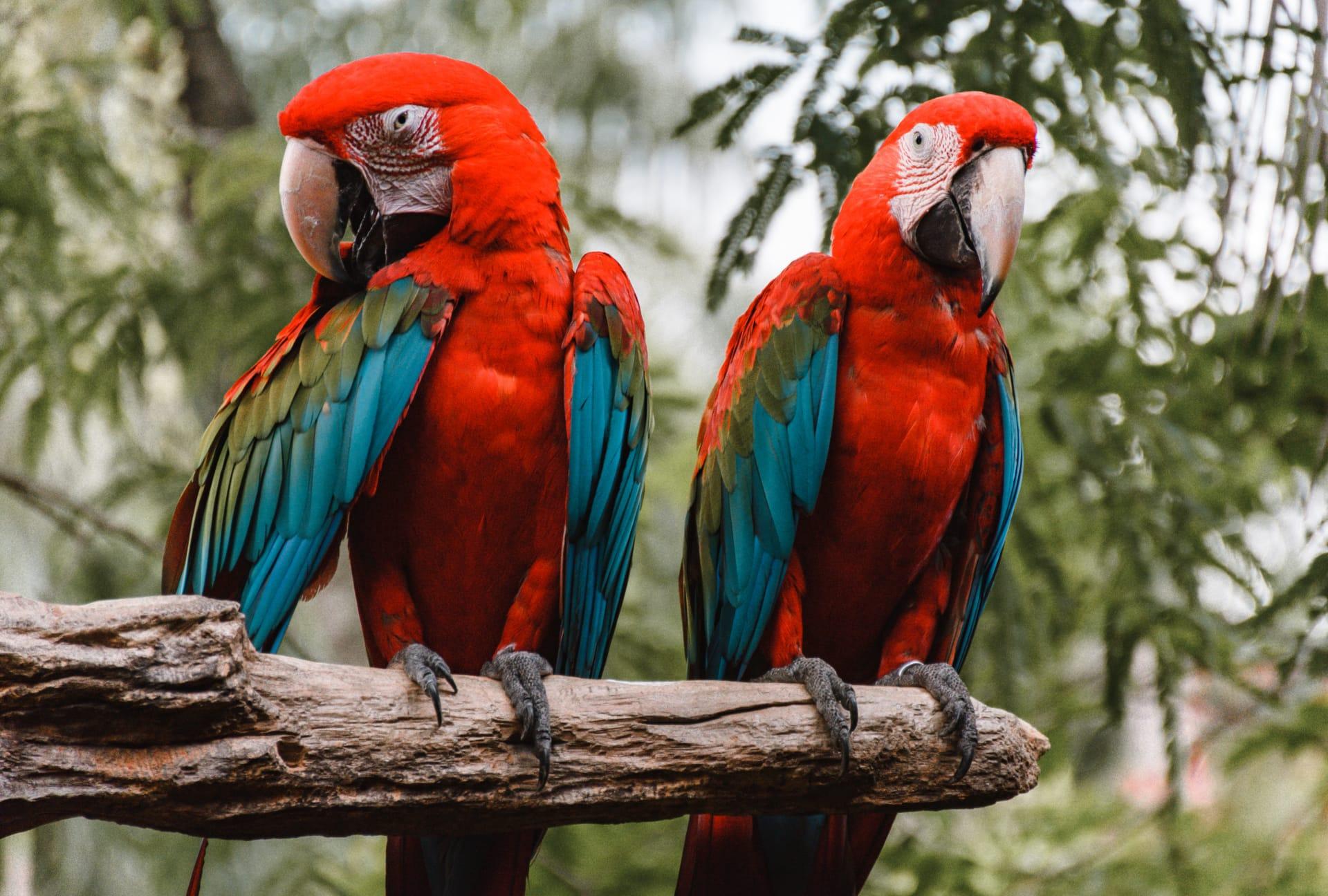1
Macaws, known for their vibrant colors and striking beauty, boast an impressive wingspan that can stretch up to 3.5 feet (1.07 meters), making them one of the largest flying parrot species. Their size isn't just for show; it enables them to travel up to 15 miles (24 kilometers) each day in search of food, which primarily includes fruits, nuts, and seeds. This extensive daily journey is crucial for their survival in the wild, as they traverse various habitats from rainforests to savannas.
Their strong, curved beaks are not just for cracking open hard nuts and seeds; these beaks can exert a pressure of 2000 pounds per square inch (psi), rivaling the bite force of large predators. This powerful tool serves multiple purposes, from feeding to nest-building. They use their beaks like a third foot to help them climb and hold objects, showcasing their remarkable dexterity and adaptability in different environments.

2
Macaws are social birds, often seen flying in pairs or small groups. Their social nature extends to their monogamous relationships, where they form lifelong bonds with a single mate. These pairs engage in mutual grooming and share food, displaying affection and strengthening their bond. This social behavior is not only endearing but also essential for their emotional well-being, as isolation can lead to stress and health issues in these birds.
These parrots are not just visually striking but also vocally impressive. Macaws have a varied and loud call, which they use for communication over long distances. Their calls can be heard up to several miles away in dense forests. Additionally, they are excellent mimics, capable of replicating a wide range of sounds, including human speech. This ability is not just for entertainment; it plays a crucial role in their social interactions and territorial displays.

3
Macaws play a significant ecological role as seed dispersers. When they eat fruits, they often fly long distances before excreting the seeds, thus aiding in the spread of various plant species. This process is vital for maintaining the diversity of tropical forests. Their role in the ecosystem underscores the importance of their conservation, as their decline can have cascading effects on forest composition and health.
Their vibrant plumage isn't just for attracting mates; it also serves as camouflage. In the dappled sunlight of the rainforest canopy, their bright colors blend surprisingly well with the leaves, flowers, and fruits. This natural disguise helps protect them from predators while they forage. Their coloration varies among species, ranging from brilliant blues and reds to greens and yellows, each adapted to their specific habitat and lifestyle.

4
Macaws have a long lifespan, with some species living up to 60 years in the wild and even longer in captivity. This long life requires a significant commitment from those who choose them as pets, as they need constant social interaction, mental stimulation, and space to fly. Their intelligence and emotional depth mean they form strong attachments to their owners, often leading to challenges if rehomed.
These birds possess a unique adaptation in their tongue. Macaws have a bone inside their tongue that helps them tap into fruits and nuts more effectively. This adaptation is particularly useful for extracting hard-to-reach nutrients, demonstrating their specialized feeding habits. Their diet in the wild is diverse, including not just fruits and nuts but also nectar, insects, and, in some cases, clay from riverbanks, which is believed to help neutralize toxins in their diet.

5
Macaws are known for their synchronized flight patterns, especially during morning and evening flights to and from their feeding grounds. These group flights are not just a way to find food; they play a crucial role in social interaction and mate selection. Observing these flights reveals intricate aerial acrobatics and coordinated movements, reflecting their strong social bonds and communication skills.
Interestingly, Macaws can exhibit a form of "blushing." The bare skin on their face, often white, can turn pink when they are excited or stressed. This change is due to increased blood flow, much like blushing in humans. It's a unique feature that provides insight into their emotional state, adding another layer to understanding these complex and fascinating birds.